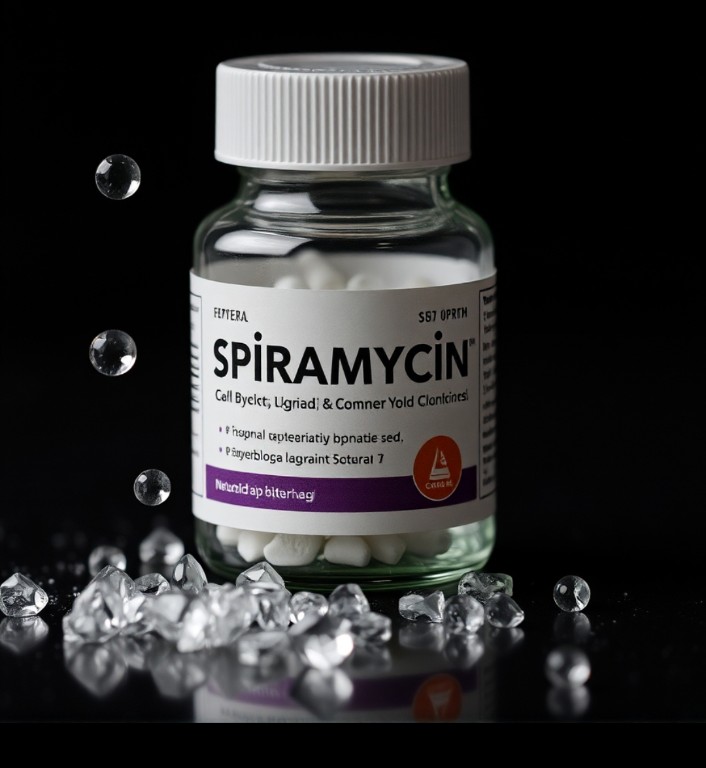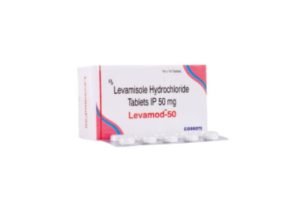
Spiramycin Overview
Spiramycin is a macrolide antibiotic produced by Streptomyces ambofaciens. It works by inhibiting bacterial protein synthesis by binding to the 50S ribosomal subunit, making it primarily bacteriostatic. Spiramycin is used to treat a variety of infections, especially in cases of toxoplasmosis during pregnancy, and it is preferred when erythromycin cannot be used.
Brand Names and Formulations
Spiramycin is available under various brand names, including:
- Rovamycine
- Spiramycin Veyx
- Spiradine
Common formulations and strengths:
- Tablets: 1.5 million IU, 3 million IU.
- Oral Suspension: Available in some regions but less common.
- Injectable Solution: 1.5 million IU/5 mL ampoules (used in hospitals for severe infections).
Uses/Indications
Spiramycin is indicated for the treatment of various bacterial infections, with a focus on:
- Toxoplasmosis in Pregnancy:
- Spiramycin is the drug of choice for preventing congenital toxoplasmosis in pregnant women infected with Toxoplasma gondii. It reduces the risk of transmission to the fetus.
- Respiratory Tract Infections:
- Effective for pharyngitis, sinusitis, bronchitis, and pneumonia caused by susceptible organisms.
- Dental Infections:
- Used in the treatment of periodontal and other dental infections.
- Skin and Soft Tissue Infections:
- Can be used to treat infections like cellulitis and impetigo caused by susceptible organisms.
- Other Protozoal Infections:
- Occasionally used for other parasitic infections such as cryptosporidiosis, especially in immunocompromised patients.
Dosage
- Adults:
- Standard Dose: 1.5 million IU to 3 million IU orally every 8-12 hours depending on the severity of the infection.
- Toxoplasmosis in Pregnancy: 3 million IU every 8 hours to prevent fetal transmission.
- Children:
- 150,000 to 300,000 IU/kg/day divided into two to three doses for bacterial infections.
- Special Situations:
- Toxoplasmosis in Pregnancy: Treatment should begin as soon as maternal infection is confirmed to prevent fetal infection.
Side Effects
Spiramycin is generally well tolerated, but it can cause some adverse effects:
- Gastrointestinal Effects:
- Nausea, vomiting, diarrhea, and abdominal pain are the most common side effects.
- Allergic Reactions:
- Skin rashes, urticaria, and, in rare cases, anaphylaxis.
- Hepatotoxicity:
- Rare cases of elevated liver enzymes and jaundice have been reported.
- CNS Effects:
- Headache and dizziness may occur in some patients.
- Injection Site Reactions:
- For intravenous administration, pain and irritation at the injection site can occur.
Contraindications
Spiramycin is contraindicated in:
- Hypersensitivity:
- Allergy to spiramycin or other macrolide antibiotics.
- Severe Liver Disease:
- Caution is needed in patients with pre-existing liver conditions, as spiramycin is metabolized by the liver and can cause hepatotoxicity.
Drug Interactions
- Macrolide Antibiotics:
- Caution should be used when combining spiramycin with other macrolides (like erythromycin) due to the potential for additive side effects or competitive binding at the ribosomal subunit.
- Antacids:
- Aluminum- or magnesium-based antacids can reduce the absorption of spiramycin when taken concurrently, so these should be spaced apart.
- Warfarin:
- There is a potential interaction with warfarin, leading to an increased risk of bleeding. Monitoring of INR levels is recommended when used together.
- Oral Contraceptives:
- As with many antibiotics, spiramycin can potentially reduce the effectiveness of oral contraceptives, and additional contraception methods should be used during treatment.
- Cyclosporine:
- Spiramycin may increase the concentration of cyclosporine, increasing the risk of nephrotoxicity. Cyclosporine levels should be monitored.
Special Considerations
- Toxoplasmosis in Pregnancy:
- Spiramycin is particularly useful in preventing congenital toxoplasmosis. However, it is not effective in treating fetal infections once they have occurred, and combination therapy with pyrimethamine and sulfadiazine may be needed.
- Hepatic Monitoring:
- Liver function should be monitored in patients receiving long-term therapy, especially those with pre-existing liver conditions.
- Pregnancy and Lactation:
- Pregnancy Category B: Spiramycin is considered safe for use in pregnancy, especially to prevent congenital toxoplasmosis.
- Breastfeeding: Spiramycin is excreted in breast milk in low concentrations. While it is considered safe for use during breastfeeding, caution is advised.
Conclusion
Spiramycin is an effective macrolide antibiotic, particularly valuable in preventing congenital toxoplasmosis during pregnancy. It is well-tolerated and provides an alternative for patients allergic to other macrolides or penicillin. However, its limited availability in some regions and risk of hepatotoxicity mean that its use should be reserved for cases where it is the preferred or only option. Its safety profile in pregnancy makes it an essential drug for preventing vertical transmission of toxoplasmosis.







